Review and photos by OkapiBoy
Last time we explored the high Tibetan country and met one of its unique and charismatic inhabitant.
Today, we travel down south of mainland Asia and head west towards the coast, leaving behind the harsh landscape.
For my next review, I have decided to continue with the Asian theme and spotlight another animal from Asia.
If you look at the map of mainland Asia, you will see a stretch of mountains that run north to south like a spine that divides the interior and the coast. This is the Annamites mountain range that runs along the countries of Lao, Vietnam, and Cambodia.
Here in this mysterious jungle lives one of the worlds rarest and endangered animal, the Saola (pronounced Sow-la).

The Saola (Pseudoryx nghetinhensis) is a small species of bovine found only in the Annamite mountain range. Also called the Vu Quang ox, Spindlehorn, or more romantically the Asian Unicorn.
It is one of the last large mammals “discovered” by western science, only having been discovered in 1992 based on few skulls and some dried skin. It wasn’t till much later that a live animal is even seen.
Of course indigenous people knew about its existence long before it came to the attention of the westerns world.
Like the fabled unicorn, the Saola is almost as mythical and so very little is know about the animal even today. What is known though is that it is on the very brink of extinction.
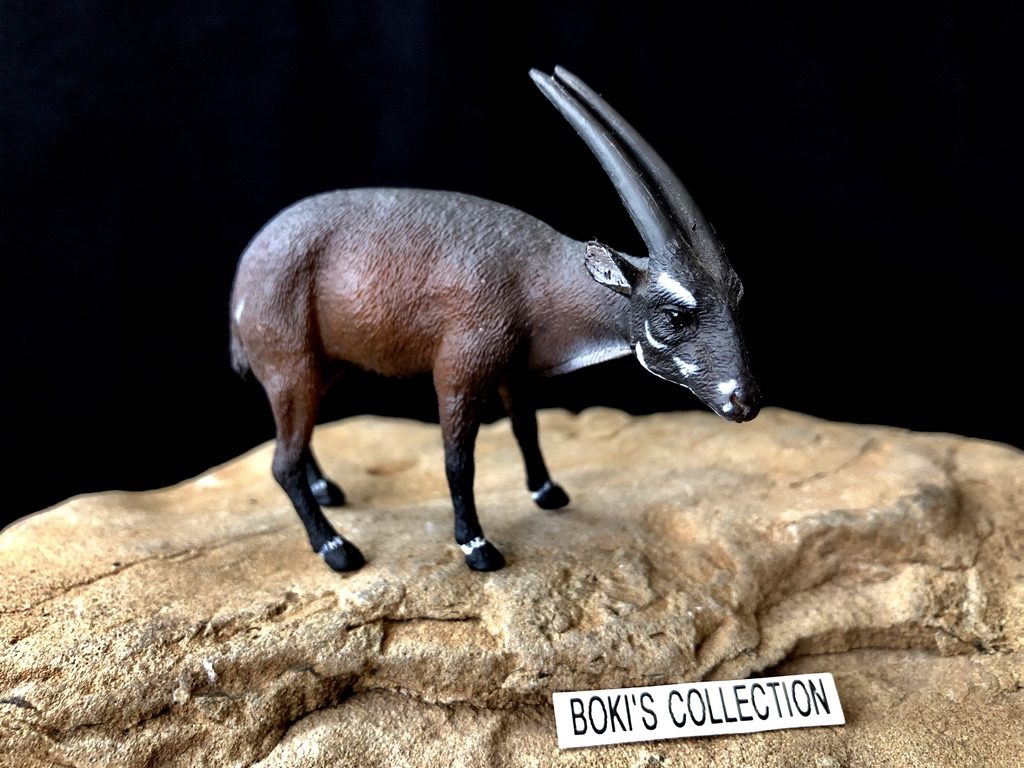
So it was a great surprise that in 2013 CollectA released a figure of this species. But again, CollectA is famous for choosing the under represented and ultra obscure species that if anyone is to make a figure of it, it would be them.
Still, it was an unexpected and pleasant surprise to finally see and have this enigmatic animal in toy form.
With only a handful of living specimens ever being seen and photographed in the wild and captivity, this figure is one way to bring attention to it.
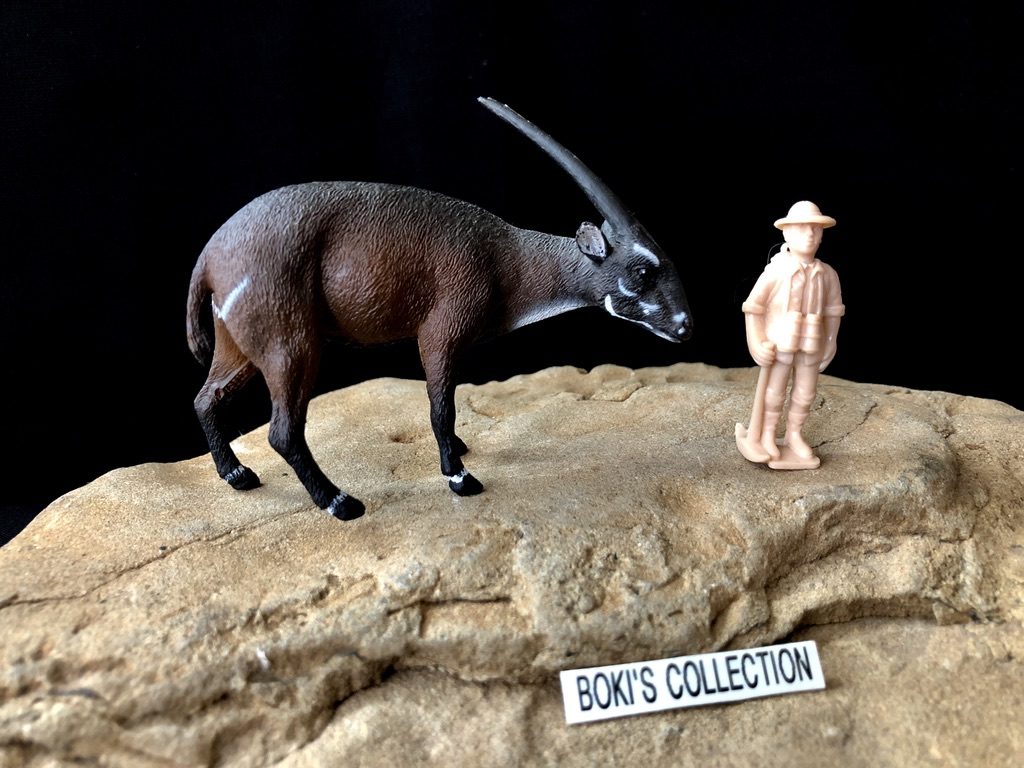
This figure is so beautifully done and really captures the essence of the animal. We are used to seeing large bovids, what we are not used to is seeing small sized ones such as the Saola.
The animal, from what we currently know, stands just around 33”inches tall and have a body length of just under 5 feet long.
The figure measures 3.5” inches long with the curvature of the neck and stands 2” inches tall, so roughly around the 1:18 scale I believe (i’m really bad at calculating scale).

Perhaps the most distinctive are the horns, which are long and and pointed and both sexes have them. This figure is a male, just look under.
The horns are so pointed and straight that when viewed from the side, it looks like it only has one long horn, thus the name Asian unicorn.
The shape of the horns is also one reason it is easy to confuse the Saola as an antelope, in particular the various Oryx species, instead of a bovine like cattle and buffalos.
The horns on the figure is almost 1.5 inches long, it may be a little long, but since so little is known about and with only handful of samples, who knows, the horns could very well be longer than what we currently know. It is colored black.
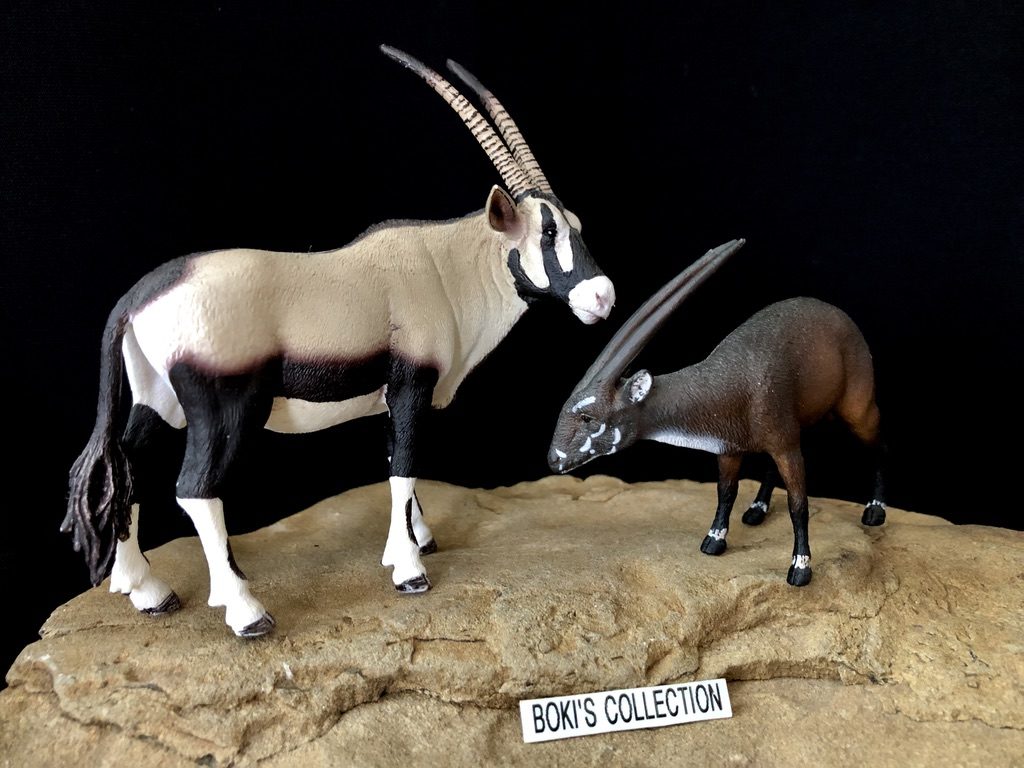
The face is nicely done and really captures the docile nature of the animal. From the very few live animals that were observed in captivity, it seems like the Saola has a very docile temperament.
The distinctive white markings are all in the right place. We see these markings on the snout, the checks, eyebrows, as well as the jawline and inside of the ears. There is also a splash of white on the throat area of the neck.
The fur on the face is even delicately sculpted including a little tuft of longer ones on the forehead, really beautiful.
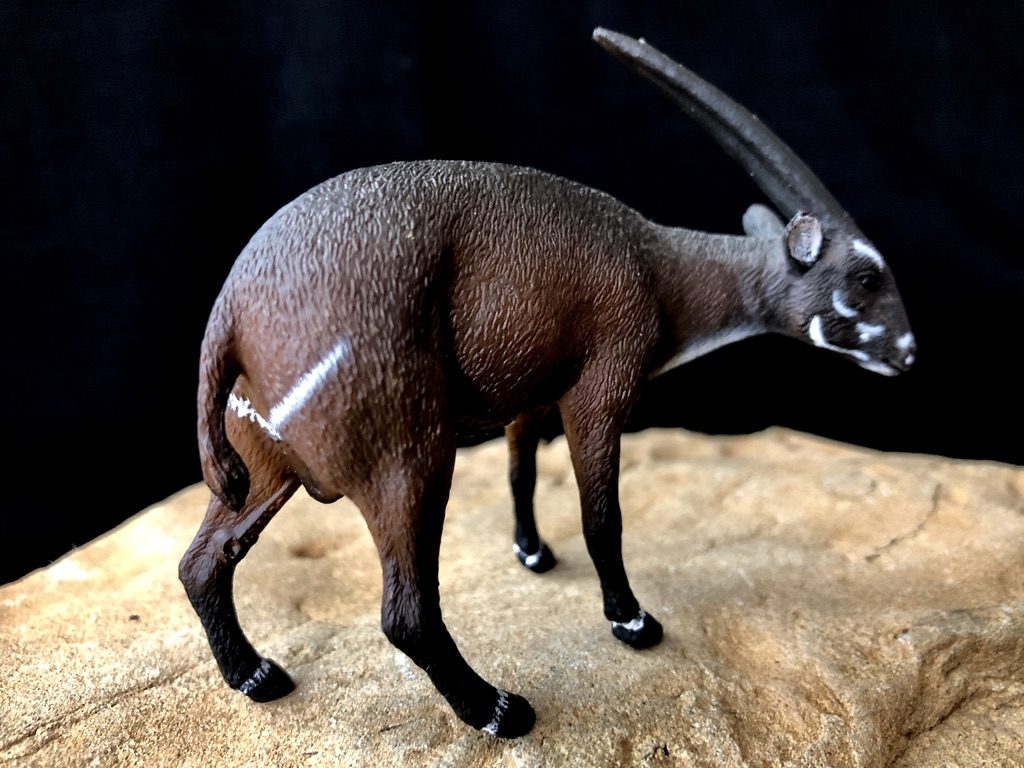
Saola lives in the deep forest so its dark coloration and scattering of white spots is an adaptation to blend in with its surroundings, making the animal almost invisible in the dappled light of the forest floor.
The body colors varies, but is mostly a dark reddish brown, with some individuals showing lighter shades.
CollectA’s figure is colored darker on the upper half of the body and slowly transitions to a lighter rust brown shade as it reaches the side and stomach and belly area. This transition is nicely executed and blended.
On the rump, we see the white stripes that almost form a V shape when viewed directly from behind.
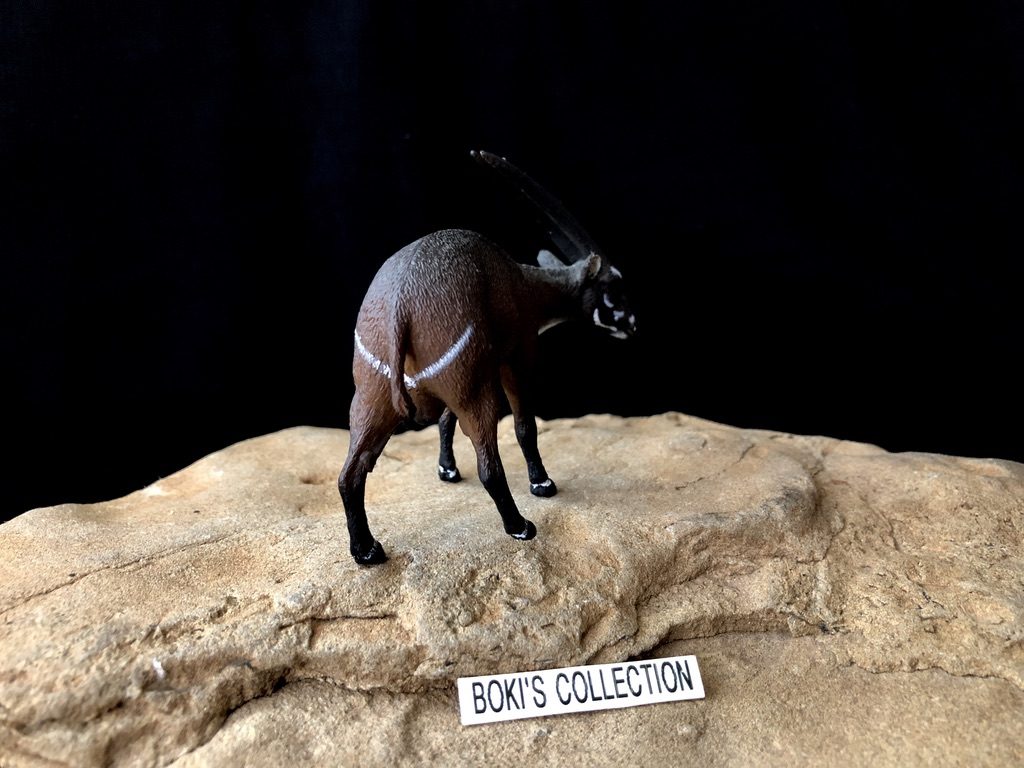
The legs are almost black and we see white rings encircling the ankles just before the hoofs.
Each legs show great muscle definitions, you can even see where the tendons are located, that’s how detailed this figure is. Even the short fur on the skinny legs is so well defined. The fur details are so delicate that in some areas you can only see them in certain light direction.
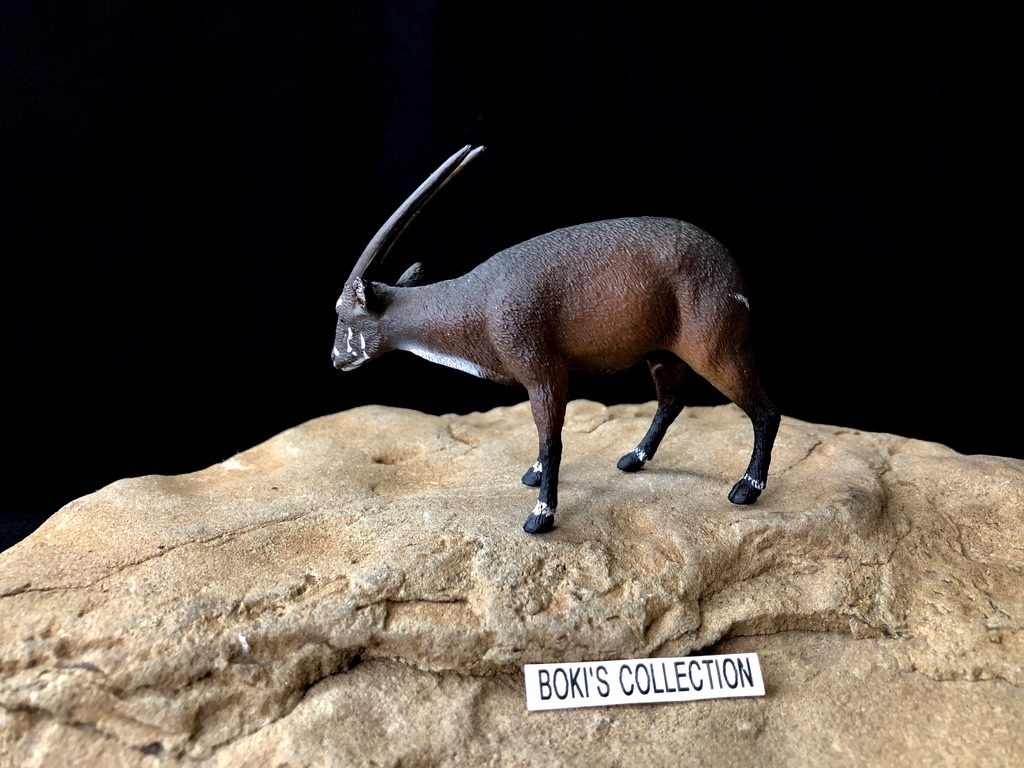
The pose is calm yet shows a lot of movement. The head is held slightly lowered as if the animal is about to reach for something on the ground.
The neck and head is tilted sideways. Both front legs planted firmly on the ground while the back legs are slightly apart, the tail in a relaxed position.

Perhaps mirroring its dire situation, there is an aura of sadness that the animal exudes and CollectA was able to fully capture in this figure, down to those dark sad looking eyes.
The Saola came to out attention already as a critically endangered species, a very sad and unenviable status.
With small population, perhaps less than a few hundred left, scattered in one of the most remote place on earth, the Saola’s continued survival have hit a crisis mode.
Shrinking habitat, poaching, and isolated population all contributed to the Saola’s plight but hunting is emerging as the most serious threat to its continued existence in the wild today.
Saola’s are often caught in snares set by hunters intended for other animals.
There is also a growing demand for its horns as well as for live animals that fuels the illegal trade in wildlife. Most of these live animal ends up in wealthy powerful people to keep in their private menageries as a status.

There are conservation measured being taken to try and save the Saola from extinctions jaws. Nature and conservation reserves have been established in the areas with the most likely viable populations of Soalas in Vietnam and Laos. Enforcement is difficult and often dangerous in areas as remote as the Annamites. But there are dedicated international and local groups as well as indigenous people working to conserve the Saola.
There are currently no Saola in zoos other that a few kept, often illegal, in private menageries where they live a short miserable existence.
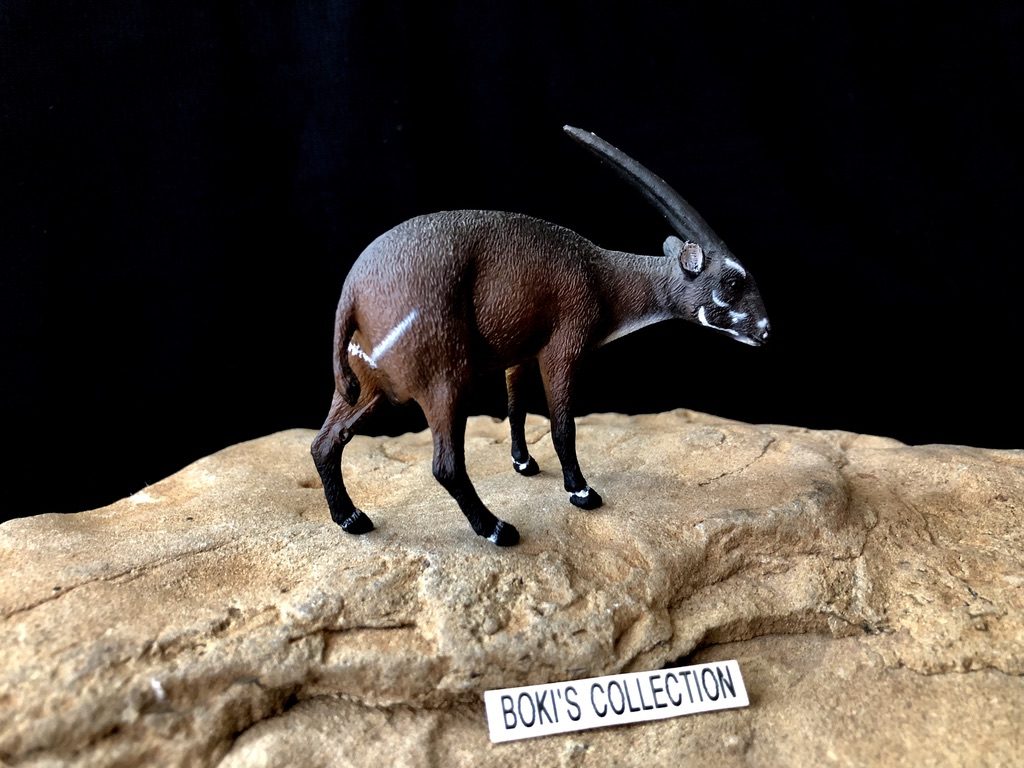
The story of the Saola, from its discovery by science to its current dire status is a complicated and sad one. Hopefully, given a chance, the fate of one of the worlds most critically endangered and mysterious mammal can be turned around into a happier ending…
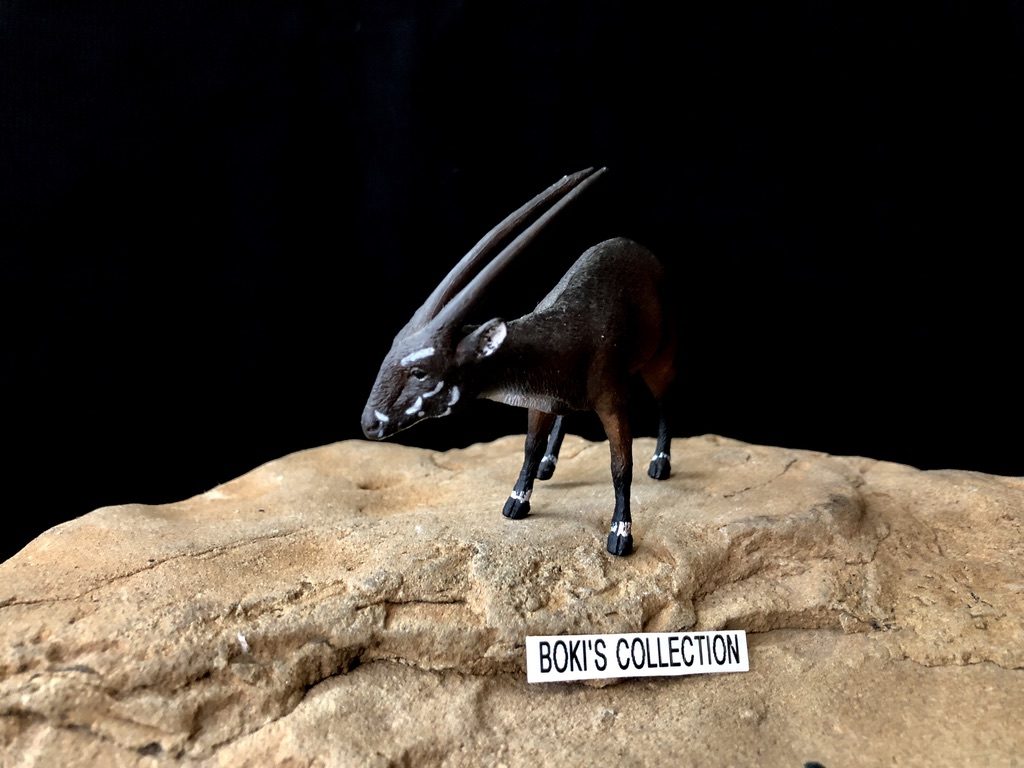
In closing, this figure is another gem in CollectA’s already impressive collection. The uniqueness and obscurity of the animal alone makes it worth having this figure in your collection. The attention to detail is amazing and truly captures the animal down to its placid nature. It is also a great figure to use as an educational tool to help spread the need to conserve the species.
Its’ a sad thought, but if conservation efforts are not successful in protecting the Saola in the wild, we may end up with just this figure to remind us that it once existed during our lifetime.
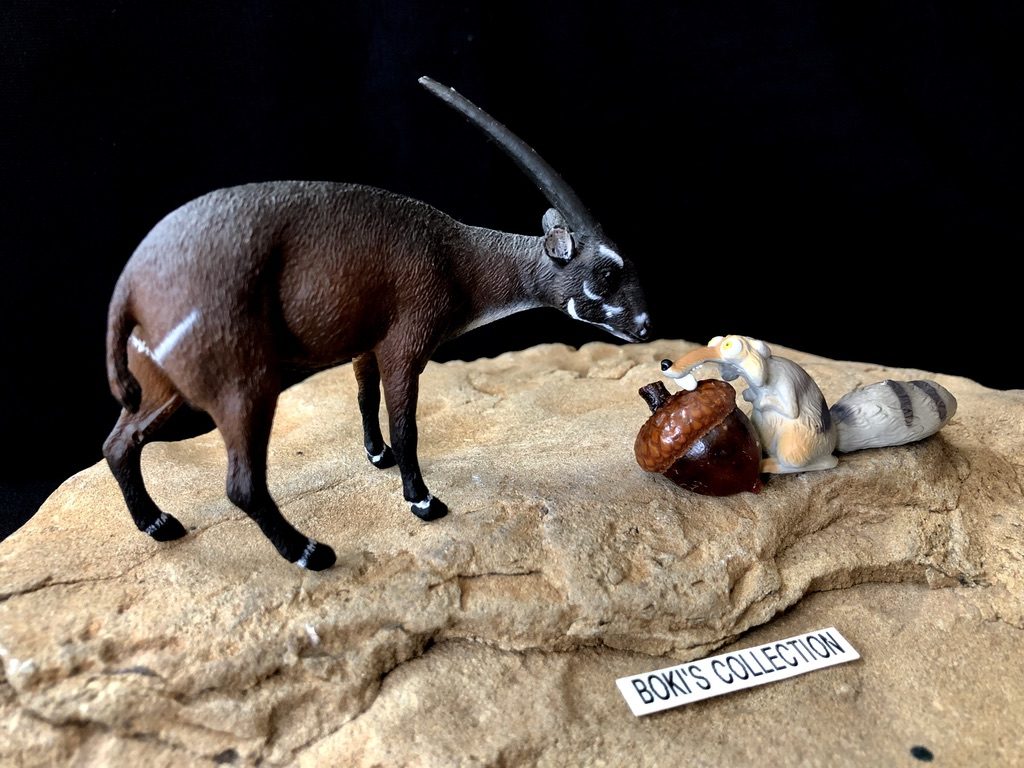
That concludes our review, hopefully it wasn’t so depressing.
I hope that you like the review and will join me next time as we continue to travel around Asia and spotlight more of the regions unique, fascinating, and endangered animals.
Till then, take care!
Cheers.
Disclaimer: links to Ebay and Amazon on the AnimalToyBlog are affiliate links, so we make a small commission if you use them. Thanks for supporting us!



